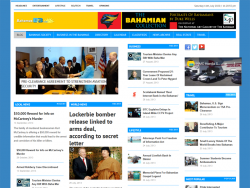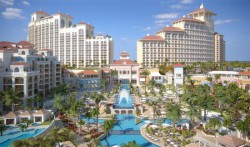Public transportation officials say there is no way they will be able to operate at their current rates with the constant strain of skyrocketing fuel prices.
Already the Taxi Cab Union is agitating to increase their fares to meet the new fuel prices.
According to union trustee Philip Watkins, the last time the taxi union received an increase was in 2001.
At that time, he said, $22 worth of diesel filled the tank of his small bus. Before yesterday’s increases, Mr. Watkins said he was paying twice as much for the same amount – $44. This new increase will cause his fill-up to be almost $60.
Considering that a fill-up lasts only two days, Mr. Watkins said, he could be paying up to $1000 a month or $12,000 a year in gas alone if the increases remain in effect.
”We are very concerned because there is no way we can make a profit with these gas prices,” he said.
Taxi fares are fixed by government at $3 for the first quarter mile and 40 cents for each additional quarter mile, regardless of whether the taxi is a regular-size cab, van, or stretch limo. In addition there are a number of fixed rate zones. (Additional passengers over two are $3 each.)
Jitney drivers are also feeling the pinch. Reuben Rahming, president of the Public Transit Association, said: ”The association is trying to be as responsible as possible but the reality is that regardless of that at some point we will have to increase our prices.” In fact, he said, the association plans to discuss the issue at a meeting tonight.
Rises
Mr. Rahming explained that at the beginning of the year, drivers on longer routes – driving’ 6,600 miles a month – each , spent about $1,630.02 a month and $5,868,072 a year for the entire industry.
At last week’s rate of $3.09 a gallon, drivers were spending $67.98 a day, $2,3039.40 a month and $ 28,828.80 a year, an industry cost of $ 7,341,840 annually.
Mr. Rahming said if the proposed rate of $3.64 holds. drivers on longer routes would spend $80.08 a day, $2,402.40 a month, $28,828.80 a year for an industry total of $8,648,640.
Considering that the price of a new bus is about $60,000, Mr. Rahming said bus drivers are spending half of the price of their vehicles each year on fuel.
He said those costs do not even take into account the tremendous cost of servicing, maintaining, insuring and licensing the vehicles.
”These prices will increase as well, because everything is affected by fuel costs,” he said.
”There are about 150 franchise holders and we are suffering by these prices,” he said.
Source: Cara Brennen, The Tribune



